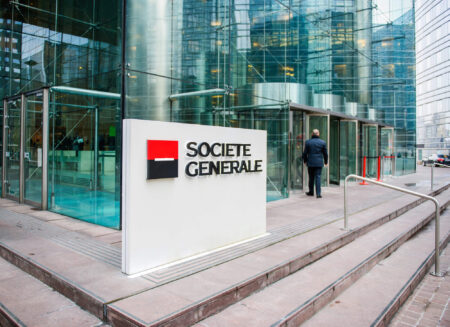What happened this week around blockchain and cryptocurrencies? The most relevant local and international events as well as appealing background reports in a pointed and compact weekly review.
Selected articles of the week:
Central bank digital currencies (CBDCs) are digital versions of a country’s fiat currency, issued by the central bank. Unlike cryptocurrencies, CBDCs are centralized and fully regulated by the central bank, allowing for stricter control over monetary policy. However, the introduction of a digital central bank currency also carries some risks, as the Swiss National Bank recognized early on. Since 2019, the Swiss watchdog has been researching various use cases of the technology and refining an application without significant negative consequences for the financial system. In an interview with CVJ.CH, Thomas Moser, Alternate Member of the SNB Board of Directors, extensively discusses the nuances of the blockchain/CBDC debate.
Thomas Moser, Alternate Member of the SNB Board of Directors, explains the nuances of blockchain technology, Bitcoin, CBDCs and more.
Tokenization involves converting an asset into a digital token that can be traded on a blockchain. Banks are increasingly experimenting with the technology as it can make assets more liquid, increase accessibility to a wider range of investors, and streamline processes such as settlement and clearing. Additionally, tokenization also offers more transparency, security, and efficiency in financial transactions. To encourage tokenization activities, the French banking giant Société Générale is launching a euro stablecoin for transaction settlement. The offering is part of the bank group’s growing crypto strategy to provide investors with services in the blockchain space that fully comply with banking and regulatory standards.
The French banking group Société Générale has launched a fully-regulated euro stablecoin (EURCV) based on the Ethereum blockchain.
Traditional banks can offer crypto services in various areas such as custody, trading, and lending. Custody involves securely holding digital assets on behalf of customers, while trading allows customers to buy and sell cryptocurrencies through the bank’s platform. By offering these services, established financial institutions are able to capture a share of the growing demand for these services and expand their customer base. After all, venturing into the blockchain space provides a competitive advantage in the financial landscape and can position banks as innovation leaders. An illustration of this market dynamic exemplified by Bank Frick, after the Liechtenstein-based bank was able to surpass its own profit projections for the past fiscal year despite the crypto winter.
Liechtenstein-based Bank Frick posted a strong fiscal year despite the crypto winter, with growing interest in blockchain banking.
Stablecoins have become an important pillar in the decentralized finance (DeFi) world. They are part of the highest-volume cryptocurrency pairs and are considered a safe haven compared to volatile cryptocurrencies, as they are tied to the value of a fiat currency. Usually, centralized companies manage these stablecoins and hold liquid financial instruments as reserves. In this form, stablecoins are comparable to traditional money market funds. Algorithmic stablecoins, on the other hand, rely on an algorithm/protocol that acts as a central bank to maintain stability. In theory, the mechanism can balance inflationary or deflationary tendencies through the minting and burning of protocol tokens. In practice, however, such models only work with a steady increase in demand and are susceptible to disproportionate withdrawals by investors, as demonstrated by the tragic implosion of the $60 billion Terra/Luna ecosystem a year ago. While token holders suffered a total loss, the now-arrested founder Do Kwon fled Singapore and paid himself $100 million into a Swiss bank account.
After the Terra ecosystem collapsed, founder Do Kwon cashed out $100 million into a Swiss account – reportedly at Sygnum Bank.
Additionally: Ethereum’s transition to Proof of Stake (Merge) marked a departure from the energy-intensive Proof of Work consensus mechanism to a more energy-efficient Proof of Stake system. “PoS” selects validators (called stakers) to confirm transactions on the blockchain instead of PoW miners. Staking involves holding a certain amount of cryptocurrency and locking it up, which incentivizes network participants to act honestly and protect the network against malicious actors. Stakers are rewarded in the form of a passive return with newly minted cryptocurrencies as well as transaction fees. Since a network update two weeks ago, investors can finally withdraw their stakes and the returns generated by staking. Contrary to the expectations of some market participants, this has not led to significant selling pressure for the cryptocurrency. An on-chain market analysis.
The Shapella Upgrade finally enabled validators to withdraw their stake on Ethereum, most of the ETH staying staked however.









